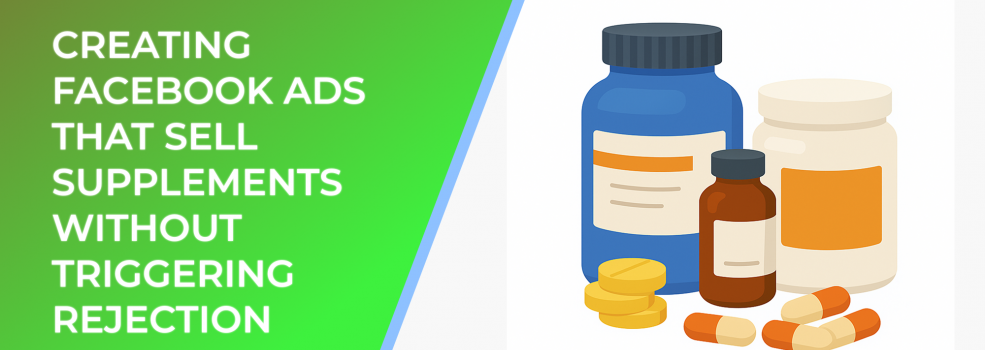Facebook’s ad policies are especially strict when it comes to health products. In fact, studies show that over 30% of supplement-related ads face disapproval during the review process. The most common reasons include:
-
Misleading claims (e.g., “Lose 10 pounds in a week”)
-
Before-and-after images
-
Overly aggressive performance promises
-
Targeting sensitive health conditions
The global dietary supplements market is projected to grow from approximately USD 162 billion in 2022 to over USD 335 billion by 2030 (CAGR ~9.5%)
Instead of fighting against the rules, smart advertisers learn how to work within them.
Crafting Compliant Yet Compelling Ad Copy
The key to supplement ad performance is clarity without exaggeration. Focus on benefits that are realistic, relatable, and policy-friendly.
-
Emphasize lifestyle over cure: Instead of claiming your supplement “eliminates fatigue,” highlight how it “supports daily energy.”
-
Use social proof carefully: Customer stories work, but they should be about lifestyle improvements rather than guaranteed results.
-
Highlight ingredients, not outcomes: “Made with Vitamin B12 for natural support” is far safer than “Boosts brainpower instantly.”
Designing Images That Pass Review
Since images can make or break ad approval, follow these guidelines:
-
Avoid before-and-after transformations — these are instant rejections.
-
Show the product in lifestyle settings: A supplement bottle on a kitchen counter looks natural and policy-safe.
-
Use clean, minimalist visuals: Busy graphics or exaggerated effects (like glowing muscles) can trigger flags.
Targeting the Right Audience
Supplement usage in the U.S. rose from around 25 % in 1975 to over 50 % by 2015, reflecting growing consumer demand
Targeting is where supplement advertisers often fail. With recent restrictions, precision matters even more. Here’s what works:
-
Interest-based audiences: Instead of targeting “weight loss,” go for broader lifestyle categories like “fitness enthusiasts” or “healthy cooking.”
-
Custom audiences: Retarget people who visited your product page but didn’t purchase.
-
Lookalike audiences: Create audiences from your best customers to find similar buyers.
Research shows that campaigns using lookalike audiences see up to 43% higher conversion rates compared to broad targeting.
Optimizing Ad Performance Over Time
A compliant ad doesn’t guarantee strong results — optimization is where the real performance gains happen. Track key metrics like:
-
CTR (Click-Through Rate) — to measure engagement with your creative.
-
CPC (Cost Per Click) — to keep your ad spend efficient.
-
ROAS (Return on Ad Spend) — to see if your campaigns are actually profitable.
If CTR drops below 1%, test new images or ad copy. If CPC is too high, refine targeting. High ROAS means you’ve found the right mix — scale it gradually.
Final Thoughts
Selling supplements with Facebook Ads isn’t about tricking the system. It’s about playing within the rules while still driving performance. Keep your copy honest, your images clean, and your targeting smart. With the right approach, supplement brands can thrive on Facebook — without endless ad rejections.

